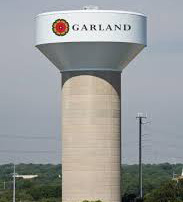At the Jan. 14 Garland City Council work session, staff presented additional options for the phase-in of the $31.60 per month water rate increase for multi-family dwellings. (Click here for background.)
A decision was made to implement the increase in two phases with the first phase being March 1 and the second Oct. 1. However, with new council members being seated after the May election, the Oct. 1 half of the implementation could be changed.
“We can’t legally bind the incoming City Council members to make the second phase happen,” Council Member Robert J. Smith said.
Additionally, before the October half of the increase is implemented, rate consultants will have finished an analysis requested by council which could change the plan.
Smith explained that the upcoming rate analysis is being done because District 1 Council Member David Gibbons found out that the base rate each month does not align with the fixed cost of the system — pipes, pumps, water towers, chemical testing, etc. Gibbons would like to align the actual usage cost to the actual amount that must be purchased from the North Texas Municipal Water District.
The city is charged for the same amount of water each year no matter how much is used (which is one of the reasons the city is currently involved in a lawsuit with NTMWD). The city would like change that take or pay methodology.
According to Smith, the reason that they do not align is because rates are set based on a cost recovery model. With that model, the city knows what the overall cost for water will be then adjusts rates each year to cover costs.
Gibbons wants the city’s elected officials and staff, as well as residents, to understand what the cost of service really is.
“We need to figure that out prior to looking at billing methodology changes,” he said. “If it made sense to use cost of service then we might pursue that path. But it’s just an investigation at this point.”
Smith gave an example of one of the problems associated with the cost of service method: If there is a large business sitting next to a small house, a 12-inch line is needed to get water to both the business and the house. But the house is only going to use a small portion of the water. Therefore, it doesn’t make sense to charge the house for the delivery on that 12-inch line.
The city has rate consultants to help set rates because of the many variables in rate methodologies. There is no true comparison between water usage at apartment complexes to single family houses.
Smith believes that everyone’s base rate will go up and consumption cost will come down with the cost of service method. That could be a problem as users are apt to conserve water if usage costs are more than the base rate. He said that council will have to see the numbers to decide the best approach.
Smith believes that after both phases of the increase, $31.60 for multi-family dwellings, has been implemented, rates for multi- and single-family dwellings will be equitable.
The disparity has been primarily been with the older apartment complexes because each unit does not have its own meter. Most newer complexes do have single meters for each apartment and Smith would like for council to consider an ordinance that requires all new complexes to have a meter for each unit.
Currently, without separate meters, a single person who uses much less water, is charged the same rate as a family of four that lives in the next apartment.
“With separate meters, people can be rewarded for conservation,” he said. “I think that’s a fair way to go.’


